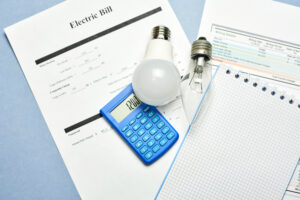Energy Audits: They don’t have to be expensive
Last updated on March 16th, 2024 at 02:10 pm
An energy audit is the single best way for you to realistically save money every month on all your energy bills. Energy efficiency experts and contractors and energy companies have known this for a long time. That is why they offer them, often at a premium price or bundled with another service or installation.
But the truth is an energy audit isn’t all that difficult. In fact, you can do a basic, rudimentary energy audit yourself right now. It only takes an hour or so, tops, to do a simple top to bottom audit.
What is an energy audit?
First, what is an energy audit? Simply put, it is the understanding of where all the energy in your house is used. Now, “used” can mean utilized or wasted. And energy can mean gas or electricity (or propane, etc)
An energy audit requres you to walk around your home and physically inspect it for energy usage. When you do this, you tend to uncover problems with the way you use energy (or the way your home uses the energy).
The classic example of an energy audit problem is a leaky window. You physically inspect a window and find that it is, in fact, drafty. It is especially noticeable on windy days. This is a waste of energy. In the winter or colder months, energy is lost because the cold air infiltrates the house, cooling it off. Or the warmer air is escaping to the cold outdoors (thermodynamics in fact says that transient air always moves from warm or an excited state to cold).
So, now you know you have to repair the window.
But an energy audit can go into so much more detail if you know what to look for.
Going beyond the window…
Okay, so you found a leaky window, maybe two of them. You make note of it and come back to repair it at a later time. That’s great. But what can you do above and beyond the window that will save you money?
Look at your electric usage. Go room to room, corner to corner, and take stock of every single thing that is plugged in. That includes appliances, electronics, lights, pumps, ovens, fans, A/C units…if its plugged in, make a note of it.
Now, go the extra mile. Estimate how much you use that particular piece of electronics or light or appliance. And make a note of the electrical power rating, in watts. Armed with this information, you can draw powerful deductions.
Using what you find
Once you have all this at your fingertips, you can put forth a plan that is sure to save energy. Reducing your energy bills starts with reducing your energy usage. If you find that you use a 60w incandescent bulb in a lamp 6 hours a day every day of the week, switching that bulb to a 14w CFL (compact fluroescent) will save you almost 2kw of power a week (that’s 2000 watts).
It doesn’t stop at just lights. The less you use electronics the more you will save. But pick your battles carefully. Reducing DVD usage on a player that only uses 45 w won’t net you as much as changing a few bulbs or turning off high power lights when not in use. Just do the math.
I don’t mean to intentionally ignore other areas of your house, such as heating and cooling…its just when people think about energy audits they tend to think of their windows and doors and obvious appliances like the furnace and Air Conditioner. Many forget that other items in the house use electricity. And sometimes their usage is at a faster pace than the more traditional energy hogs!
If you’re serious about an energy audit, you should probably check out http://www.energyaudits.net/ and look into the professional home energy audit guide. It goes into detail about everything, and I mean everything that can be done to do the most through, professional level audit at home. Its the ultimate energy DIY guide that you simply don’t have yet.


